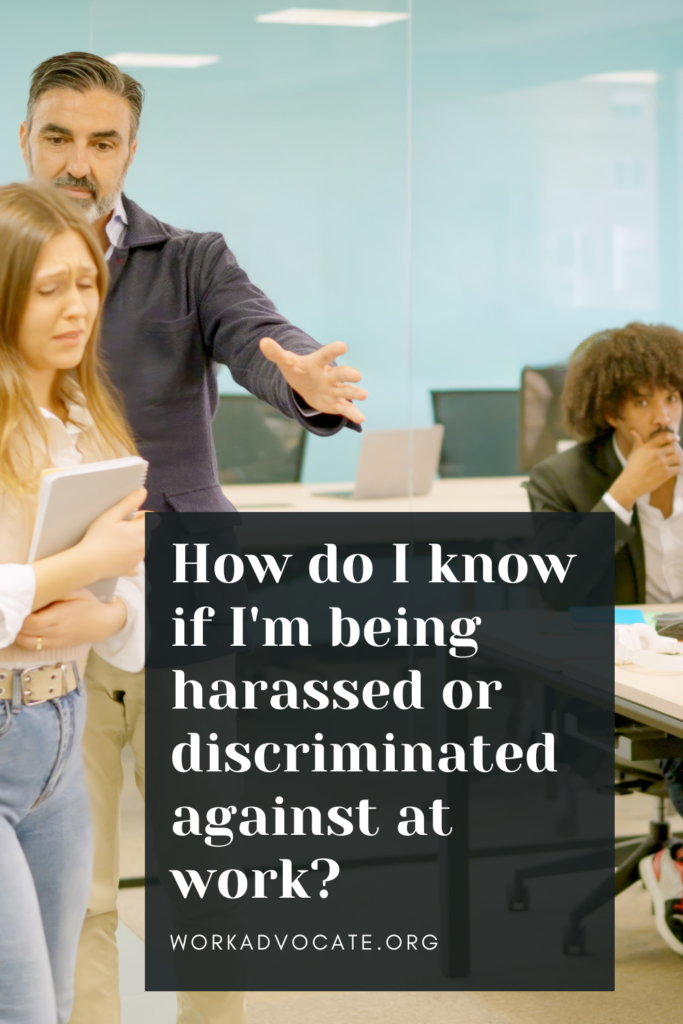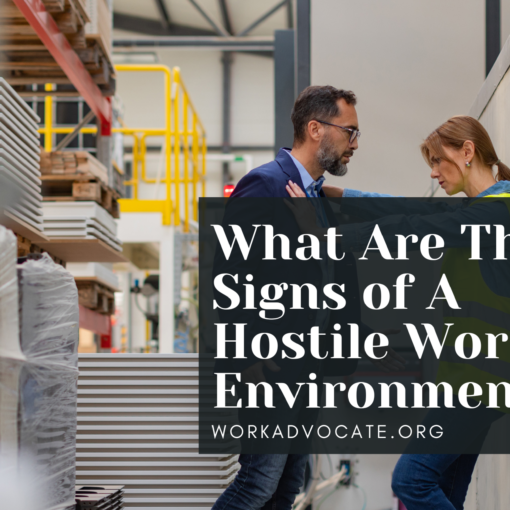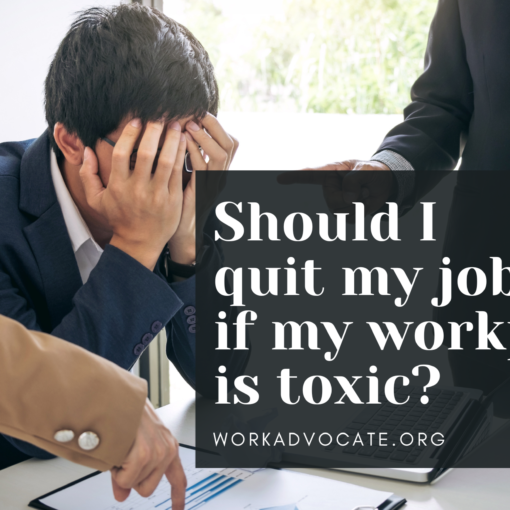
Are you wondering if you’re experiencing workplace harassment or discrimination?
Have you been feeling uncomfortable, singled out, or treated unfairly at work?
This post aims to help you understand what constitutes these harmful behaviors and how to recognize if you’re being targeted.
What is Workplace Harassment?
Workplace harassment is unwelcome conduct that creates a hostile or offensive work environment. It can be based on protected characteristics like race, gender, age, religion, disability, or sexual orientation.
Harassment can take many forms including:
- Verbal harassment: Offensive jokes, slurs, insults, threats, or derogatory comments.
- Physical harassment: Unwanted touching, assault, intimidation through physical gestures, or blocking someone’s movement.
- Visual harassment: Displaying offensive images, posters, or cartoons.
- Cyberbullying: Harassment through electronic means, such as emails, text messages, or social media.
What is Workplace Discrimination?
Workplace discrimination occurs when an employee is treated less favorably than others because of a protected characteristic. This can manifest in many ways, such as:
- Unequal treatment in hiring, firing, promotions, or compensation.
- Denial of opportunities for training or advancement.
- Being excluded from meetings, social events, or work-related activities.
- Being subjected to derogatory comments or jokes based on your protected characteristic.
Am I Being Harassed or Discriminated Against?
Recognizing if you’re a victim of workplace harassment and discrimination isn’t always straightforward. These behaviors can be overt or subtle, and they can vary depending on your individual circumstances. Here are some questions to ask yourself:
- Is the conduct unwelcome? Harassment and discrimination are based on unwelcome conduct. If you feel uncomfortable, offended, or intimidated by someone’s behavior, it’s a potential sign.
- Is it based on a protected characteristic? Harassment and discrimination are illegal when they are based on protected characteristics like race, gender, age, religion, disability, or national origin. If the behavior seems to target you specifically because of one of these characteristics, it’s a red flag.
- Is it severe or pervasive? A single offensive remark might not be enough to constitute a hostile work environment, but repeated or severe incidents can create a toxic atmosphere. Consider the frequency and intensity of the behavior.
- Is it affecting your work or well-being? Harassment and discrimination can have serious consequences for your job performance, mental health, and overall well-being. If the behavior is interfering with your ability to work or causing you distress, it’s a sign that you need to take action.
Examples of Harassment and Discrimination:
- Harassment: Offensive jokes, slurs, unwanted touching, sexual advances, intimidation, threats, or cyberbullying.
- Discrimination: Being passed over for a promotion due to your race, being paid less than a colleague of a different gender for the same work, being denied opportunities due to your disability.
What to Do If You Suspect Harassment or Discrimination:
- Document everything: Keep a detailed record of all incidents, including dates, times, specific words or actions, witnesses, and how it affected you.
- Talk to someone you trust: Confide in a friend, family member, therapist, or trusted colleague.
- Review your company’s policies: Check your employee handbook or other company documents for procedures on reporting harassment or discrimination.
- Report the incident to HR or a supervisor: Follow your company’s complaint procedure. If you’re uncomfortable reporting internally, you can file a charge with the Equal Employment Opportunity Commission (EEOC) or your state’s fair employment practices agency.
- Consider consulting an attorney: An attorney can advise you on your legal rights and help you decide on the best course of action.
Conclusion:
Recognizing workplace harassment and discrimination is crucial for protecting yourself and creating a healthier workplace. If you suspect you’re being targeted, don’t ignore it.
Take action to document the behavior, report it, and seek support. You have the right to work in an environment free from harassment and discrimination.
ACTION: For a comprehensive look at your rights along with helping you document and navigate a hostile work environment. Download The Workplace Defender
Related Posts:




